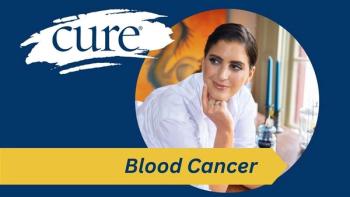
Numerous Quality-of-Life Disturbances Affect Patients with Cholangiocarcinoma, Survey Finds
A survey administered by pharmaceutical company Incyte and the nonprofit Cholangiocarcinoma Foundation found that patients with bile duct cancer face more than a dozen symptoms or treatment-related side effects that negatively affect their daily lives.
The results were reported July 23rd during the virtual annual conference of the Cholangiocarcinoma Foundation by Kristen Bibeau, head of global health outcome and real-world evidence generation at the pharmaceutical company Incyte. The company and the nonprofit foundation collaborated to adminster the 30-minute online survey to patients in the United States from Aug. 23 through Sept. 20 of 2019.
A survey of patients with cholangiocarcinoma found that their quality of life is heavily impacted by a host of symptoms and side effects, including depression that may be severe.
“They experience an unbelievable number of symptoms that impact their everyday lives,” Bibeau, who holds a doctorate in epidemiology, said of those with cholangiocarcinoma. “A lot of patients, nearly half, are screening as severely depressed, and that warrants further research and a better understanding and outreach regarding how patients’ mental health can be managed.”
She noted that the disease tends to strike people who are “in the prime of their lives” and are working, raising children and in some cases taking care of aging parents.
Cholangiocarcinoma is cancer of the bile ducts, which are tubes that carry bile (fluid made by the liver to help in digestion and fat absorption) between the liver/gallbladder and the small intestine. Intrahepatic cholangiocarcinoma develops inside the liver, while extrahepatic cholangiocarcinoma develops outside the liver. It is treated with surgery, radiation therapy, chemotherapy and, in some cases, the targeted drug Pemazyre (pemigatinib); immunotherapy is being tested in clinical trials.
The goal of the survey was to understand patients’ experiences with diagnosis, treatment, health outcomes and quality of life, Bibeau said.
Of the 707 participants, 77% were male and 50% were between the ages of 45 and 50. There were 157 patients with stage 1 or 2 disease, 461 with stage 3, 43 with stage 4 and 30 in remission with no evidence of disease. For the purposes of analysis, those with stage 3 cholangiocarcinoma were recategorized as having either stage 3a, meaning that the cancer was potentially operable (364 patients), or 3b, meaning that surgery probably wasn’t an option (97 patients).
A large proportion of the survey population, 47%, had perihilar, also called Klatskin, tumors; 41% had intrahepatic tumors; and 12% had extrahepatic, also called distal, disease. Perihilar and intrahepatic are the most common forms.
As part of the survey, patients took several validated questionnaires to measure their self-reported symptom burdens and, specifically, their depression status.
Learning About the Diagnosis and Treatment Journeys
When it came to receiving a diagnosis, patients reported learning they had cholangiocarcinoma an average of 22 months after they first noticed symptoms, at an average age of 44. One-third of patients said they had initially received an erroneous diagnosis of a different cancer type; among that group, more than half were misdiagnosed with gallbladder cancer.
Bibeau noted that the journey toward diagnosis tends to be more difficult for patients with intrahepatic cholangiocarcinoma, which causes fewer outward symptoms and so is more difficult to diagnose.
Just over half of patients sought a second or third opinion after receiving their diagnosis, with the average number of oncologists consulted totaling 2.5.
Bibeau said that approximately two years had passed from the time patients received their diagnoses until they took the survey. During that period, some patients’ cancers had moved from their initial stage to a later stage; while 56% had stage 1 or 2 disease at diagnosis, 51% had stage 3a disease at the time of the survey.
When asked what drove their treatment decisions, they reported that physician’s judgement was the main driver, Bibeau said. Next most important was the quality of life that could be expected on a particular treatment regimen, she said. “The later the stage, the more the quality of life began to creep up and up to rival the importance of physician judgement,” she said.
Weighing Symptom Burden
Patients were also asked to report their experiences with 16 symptoms considered relevant by a panel of cholangiocarcinoma experts. It turned out that 100% of the patients had experienced at least one of the symptoms and the average number that patients reported facing in day-to-day life was 14. For every symptom listed, most patients said it had a considerable or greater impact on their lives.
The symptoms asked about were yellowing of the skin (jaundice) and whitening of the eyes; intensely itchy skin; white-colored stools; darker-than-normal urine; discolored nail beds; fatigue; abdominal pain; unintended weight loss; insomnia; anxiety; depression; neuropathy; loss of hearing; loss of hair; diarrhea; and constipation.
“So much gravitas was given to each symptom (that we determined) it’s not any one symptom affecting their lives — it’s all of them,” Bibeau reported.
Survey responders also took a validated questionnaire, the EORTC QLQ-BIL21, which asked about symptoms specific to biliary cancers, but not to cholangiocarcinoma in particular, including eating, anxiety, jaundice, tiredness, pain, treatment side effects, drainage bags/tubes and weight loss. Approximately half the responders reported negative quality-of-life impacts in these areas, with those in the 18-44 age group reporting the highest dissatisfaction in all categories except weight loss.
Most patients also reported experiencing a lack of sexual desire or a loss of intimacy with their partner.
Through a mental health questionnaire, researchers found that 47% of the patients surveyed “screened high enough to indicate that they may have severe depression,” while 38% appeared to have moderate depression, Bibeau stated. The vast majority said this symptom was making daily life difficult, she said, and “we think it’s an important finding not appropriately studied in the literature.”
Of patients who were employed at the time of the study, 70% reported that their cholangiocarcinoma was causing impairment in their ability to do their jobs, Bibeau said, and, similarly, among all that were surveyed, 65% said their disease impaired their activities.
The number of symptoms impacting patients’ lives is highest in patients who may be surgical candidates, Bibeau noted. This may be because these patients continue to shoulder responsibilities such as working and caring for others, she said, but moving forward, she and her colleagues want to “tease out what makes stage 3a patients different from some of the later-stage patients.”





